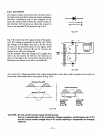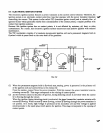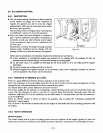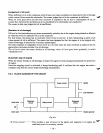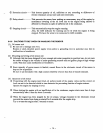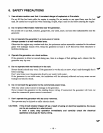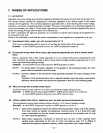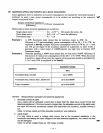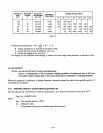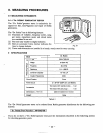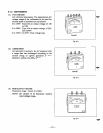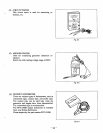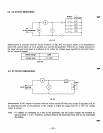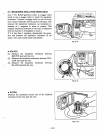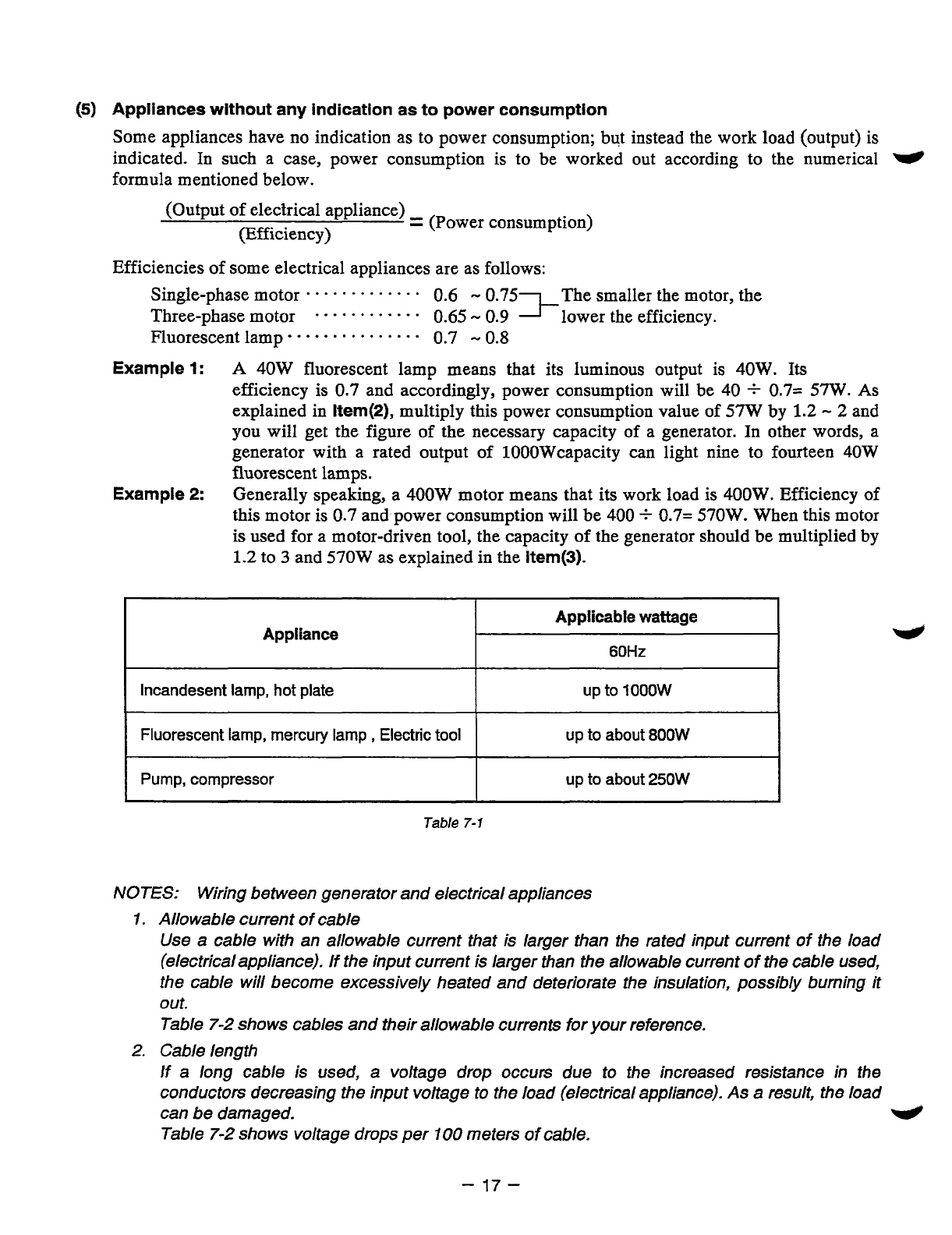
Appliances without any indication as to power consumption
Some appliances have no indication as to power consumption; but instead the work load (output)
is
indicated.
In
such a case, power consumption
is
to
be worked out according to the numerical
*
formula mentioned below.
(Output of electrical appliance)
-
-
(Power consumption)
(Efficiency)
Efficiencies of some electrical appliances are as follows:
Single-phase motor
- - - -
-
-
- - - -
*
-
-
0.6
-
0.75
The smaller the motor, the
Three-phase motor
*
- - -
*
*
- -
- -
-
*
0.65
-
0.9
>lower the efficiency.
Fluorescent lamp
- - - -
- -
- -
-
- -
- -
0.7
-
0.8
Example
1
:
A
40W fluorescent lamp means that
its
luminous output
is
40W.
Its
efficiency
is
0.7
and accordingly, power consumption will be
40
+
0.7=
57W.
As
explained in
Item(2),
multiply this power consumption value of 57W by
1.2
-
2
and
you will get the figure of the necessary capacity
of
a generator. In other words, a
generator with a rated output
of
1OOOWcapacity can light nine to fourteen 40W
fluorescent lamps.
Example
2:
Generally speaking, a 400W motor means that its work load
is
400W. Efficiency of
this motor
is
0.7
and power consumption will be
400
+
0.7=
570W. When this motor
is
used for a motor-driven tool, the capacity of the generator should be multiplied by
1.2
to
3
and
570W
as
explained in the
item(3).
Applicable wattage
60Hz
Appliance
lncandesent lamp,
hot
plate
I
up
to
lOOOW
I
I
I
I
Fluorescent lamp, mercury lamp
,
Electric
tool
I
up to about
800W
I
I
Pump, compressor up to about
250W
I
1.
2.
Table
7-1
NOTES: Wiring between generator and electrical appliances
Allowable current
of
cable
Use a cable with an allowable current that is larger than the rated input current of the load
(electricalappliance).
If
the input current is larger than the allowable current
of
the
cable used,
the cable will become excessively heated and deteriorate the insulation, possibly burning it
out.
Table
7-2
shows cables and their allowable currents for your reference.
Cable length
If
a long cable is
used,
a voltage drop occurs due to the increased resistance in the
conductors decreasing the input voltage to the load (electrical appliance). As a result, the load
can be damaged.
w
Table
7-2
shows voltage drops per
100
meters
of
cable.
-
17-




